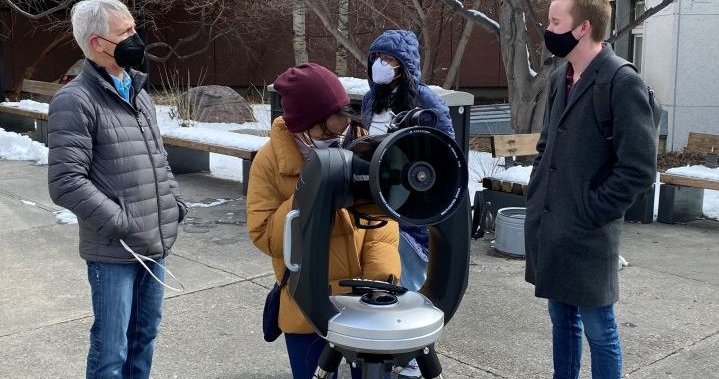
Some concerned Calgarians are urging people to think twice before firing up the lights around their homes each night.

Reducing the use of those lights would help those studying the stars and also improve life here on Earth.
“As the light pollution grows, that background light gets brighter and brighter, and begins to hide all the very faint and interesting things we’re trying to study,” University of Calgary astronomy professor Phil Langill said.
Langill and several of his students are spreading the word on an event that begins Friday, April 22: International Dark Sky Week.
“To remind people about the light that they use at night and the ill effects that it can have,” Langill said.
“If there’s a big bright street light across the street shining into your window, that interrupts the quality of your sleep. When I get behind on my sleep, I’m a sitting duck for getting a cold and I get cranky.”

Using an abundance of lights can also cause problems for wildlife.
“Where there are lots of tall buildings, the birds get confused. They think that maybe they’re flying through a forest and the light is the space between the trees,” Langill said.
“They crash into the buildings and die. It’s very sad.”

People promoting International Dark Sky Week are encouraging others to take steps to cut back on their use of lights.
“It’s always good to be a little bit more mindful when you’re using lights and take a moment to turn them off when you don’t need them,” U of C student Avmeet Kaur said.
Langill says people should be asking themselves several questions each night.
“Does the light need to shine across the whole yard or can I arrange it so that the light shines on the path so I can see where I’m walking?
“Does that light need to be on all night long? Can you put it on a motion sensor?”
Langill and his students say they’re looking forward to the advantages that darker skies would bring when they turn their telescopes skyward.
“I really like looking at constellations,” U of C student Haruka Yoshino said. “And I like to recognize what the shapes mean.”

© 2022 Global News, a division of Corus Entertainment Inc.







